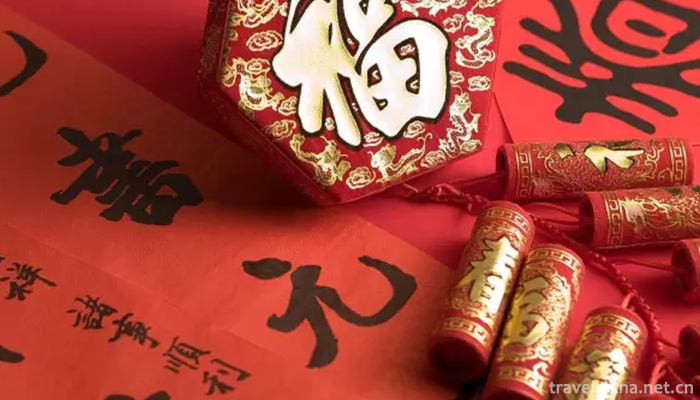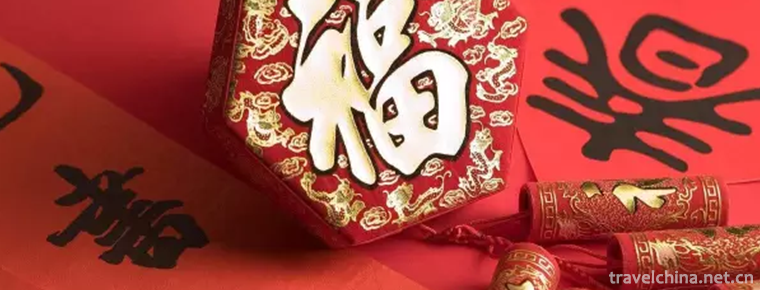Couplet Custom
Couplet Custom
Couplet is a couplet inscribed on the pillar of the couplet, also refers to the couplet, is a unique form of literature and art in China. The custom of couplets originated from the dual phenomenon of ancient Chinese in China. In the Western Jin Dynasty (about 290 years), there were rhythmic and exquisite sentences, which could be regarded as an important symbol of its formation. In the course of more than 1700 years of historical transmission, couplets, parallel prose and rhyme poems and other traditional forms of literary style influence each other and draw lessons from each other. During the three important development periods of the Northern Song, Ming and Qing Dynasties, the forms are increasingly diverse and the cultural accumulation is gradually rich. Couplets are commonly known as couplets, vernacular expressions, and alliterative languages. The term "couplets" originated in the Ming Dynasty.
On May 20, 2006, the customs of couplets were approved by the State Council to be included in the first batch of national intangible cultural heritage list .
Historical Development
The couplets begin with peach characters. As early as the Qin and Han Dynasties, there was a custom of hanging peach symbols during the Chinese New Year. The so-called "Taofu" refers to the name of the legendary ghost-lowering God "Shencha" and "Yu Lei", which are written on two peach boards and hung at the left and right doors to dispel ghosts and suppress evil spirits. This custom lasted for more than a thousand years, and it was not until the Five Dynasties that people began to inscribe couplets on peach boards. According to the Song Shishu Shijia, Meng Chang, the master of post-Shu in the Five Dynasties, said, "Except for every year, the Bachelor of fate wrote the poem, inscribed the peach inscription, and laid the door around." At the end of the year (964 AD), Xue Yinxun, a Bachelor of science, wrote a poem. With his non-work, he put forward his own proposition: Na Yuqing in the New Year, Changchun in the name of Jiajie. "This is the earliest couplet in China. Since the Song Dynasty, folk New Year's couplets have been quite common, Wang Anshi's poems "thousands of families especially blink? Xinyan Green paralyzed sentence, is the true portrayal of the grand occasion at that time. Because the appearance of Spring Festival couplets is closely related to Taofu, the ancients also called the Spring Festival couplets as "Taofu".
It was not until the Ming Dynasty that people began to use red paper instead of peach boards, and the Spring Festival couplets we see today appeared. According to Hanyun Tower Miscellaneous Tales, Zhu Yuanzhang, the emperor of the Ming Dynasty, had ordered Gong Qing's family members to add a couplet of Spring Festival couplets before the New Year's Eve, and went out in person to enjoy themselves. Thereafter, scholars and bachelors of letters all regarded the combination of questions as an elegant matter. After entering the Qing Dynasty, couplets had flourished for a time, and many famous couplets appeared. It can be seen that Zhu Yuanzhang took administrative orders to require every household to paste Spring Festival couplets, which played a great role in promoting the formation of the custom of pasting Spring Festival couplets.
With the development of cultural exchanges among countries, couplets have also been introduced to Vietnam, Korea, Japan, Singapore and other countries. These countries still retain the custom of affixing couplets. It has been handed down to the present day and has a historical memory, which enriches the brilliant historical civilization of China.
main features
It is a unique artistic form of the Chinese language, which is concise and concise, well-balanced and coordinated. It can be said that the art of couplets is the cultural treasure of the Chinese nation. According to the different functions, the types of couplets can be divided into Spring Festival couplets, Hefei couplets, Shoulian couplets, pull couplets, decorative couplets, scenic spots couplets, self-titled couplets, industry couplets, communication couplets and various skill couplets (including funny couplets, etc.).
Couplets take "adverbs" as quantifiers, and generally use two lines as a pair, which are displayed side by side in vertical rows. They are read from top to bottom, right to left, right to upper and left to lower.
Antithetical couplets are developed from the antithetical sentences of metrical poems and belong to metrical literature, which retains some characteristics of metrical poems. Ancient people compared reciting poems with reciting poems, which reflected the relationship between them to a certain extent. Antithetical couplets require neat antithetical, level-level coordination, top-end hitting and bottom-end hitting. These characteristics have some similarities with rhythmic poems, so some people call couplets posted poems. However, couplets are different from poems. Generally speaking, they are more refined than poems, and their sentence patterns are more flexible. They can be long or short, flexible and flexible. There are no restrictions on the number of words or sentences, only one or two words are short, and hundreds of words are long. Couplets can be four, five, six, seven, eight or nine, or ten or dozens. In ancient Chinese architecture, there are even long couplets of hundreds of words. There are many forms of couplets, such as positive, negative, flowing, joint and set sentences.
However, no matter what kind of couplets are used or what form they are used, they must have the following characteristics:
First, the number of words is equal, and the sentences are identical. In addition to intentionally emptying the position of a word to achieve a certain effect, the number of upper and lower conjunctions must be the same, not more or less.
Secondly, it is necessary to keep the tone in harmony. Traditionally, it is used to "rise and fall", that is, the words at the end of the last sentence in the upper couplet are used in the punctuation, and the words at the end of the next couplet are used in the punctuation.
Third, the parts of speech are relative and the positions are the same. Generally known as "virtual to virtual, real to real", that is, noun to noun, verb to verb, adjective to adjective, quantifier to quantifier, adverb to adverb, and the relative words must be in the same position.
Fourth, the content should be related and linked up. The meaning of up-down connection must be linked up with each other, but it can not be repeated.
In addition, the traditional way of writing and posting the couplets must also be vertical, from the right to the left, from the top to the bottom, and can not be inverted. The cross-criticism closely related to the couplet can be said to be the topic of the couplet and also the center of the couplet. Good cross-criticism can play a key and complementary role in couplets.
Inheritance value
The stylistic characteristics of the poems are the matching of up and down, the equal number of words, the same part of speech, the relative level and level, the corresponding grammar, the rhythm and the form and the meaning, especially the balance of the rhythm and the part of speech. The couplets are concise, elegant and popular. They are known as "poems in poetry".
The couplets are based on characters and calligraphy. They have a wide variety of products, including paper mounting, frame, woodcut, stone carving and bamboo carving. In the course of the development of couplets, a large number of related writings have appeared, and tens of thousands of books and books of various couplets have been published. Couplets are widely used in festivals, inscriptions, congratulations, mourning, mausoleums and other occasions besides hanging in scenic palaces, pavilions, halls and bookstores.
Whether chanting things and expressing ambition or describing scenery or expressing feelings, couplets require the author to have a higher generalization ability and the ability to control the writing, so that he may have few words, rich in literary feelings, both in appearance and appearance, and give people the feeling of Ideological and artistic beauty.
The customs of couplets are passed down and spread in the areas where Chinese people use Chinese and even in the whole world, as well as among the nationalities with cultural origins of Chinese characters, which is of great value to the promotion of Chinese national culture.


-
1.Lanzhou handpulled noodlesLanzhou Beef Noodles
Lanzhou beef noodles, also known as Lanzhou clear soup beef noodles, is one of the "top ten noodles in China", and is a delicious snack in Lanzhou area of Gansu Province
Time 2018-11-02 -
2.Nanxun ancient town Scenic Area
Nanxun Ancient Town is located in Nanxun District of Huzhou City, at the junction of Jiangsu, Zhejiang and Shanghai provinces.
Time 2018-12-07 -
3.Shahu Sand Lake tourist attraction
In 1996, Shahu Lake was listed as one of the 35 trump-card scenic spots in China. In 2000, Shahu Lake was designated as "National Civilized Tourism Scenic Spot" by the Central Office of Spir
Time 2018-12-12 -
4.Holiday Beach
Holiday beach is located on the west coastal avenue of Haikou City, which is 6 kilometers long. On the left side is the verdant forest belt of ephedra, with resorts, hotels, playgrounds and so on
Time 2018-12-23 -
5.White Deer hot spring bailu hot spring
Bailu Hot Spring is a hot spring resort center built according to the national AAAA scenic standard. Located in Wentang Town, Pingshan County, Shijiazhuang City, Hebei Province, Bailu Hot Spring is a
Time 2019-01-02 -
6.Yishui Underground Fluorescent Lake Scenic Area
Yishui underground fluorescent Lake tourist area is now renamed as the fluorescent insect water tunnel tourist area.
Time 2019-03-03 -
7.Cangzhou Wushu
Cangzhou people have been known for their simplicity, integrity, diligence and bravery since ancient times. Because of the relationship between geography and historical conditions
Time 2019-04-04 -
8.Forty eight Zhai Song Festival
The forty-eighth Village Song Festival is a northern Dong dialect Song Festival in Tianzhu County, Guizhou Province, China. It is a traditional national festival featuring Dong
Time 2019-05-01 -
9.Haimen mountain song
Haimen Mountain Opera is a traditional opera popular in Haimen area of Nantong, Jiangsu Province. It originated from Haimen Mountain Song and developed into
Time 2019-05-02 -
10.Traditional Processing Techniques of Liuweizhai Sauced Meat
Liuweizhai is a well-known Chinese brand which was founded in 1738 in the three years of Qianlong in Qing Dynasty. Its sauced meat, as a traditional food in China and a famous food in the Three Jin Dy
Time 2019-05-14 -
11.Baisha Xile of Naxi Nationality
Naxi Baisha Xile is also known as "Xiaoli at breaking time", "Xiaoli at breaking time", "Xili at breaking time", "Xili at breaking time" and "Xie Li at bre
Time 2019-06-06 -
12.Chengdu University
Chengdu University, established in 1978 with the approval of the Ministry of Education, is a comprehensive University jointly built by Sichuan Province and Chengdu City. It is a key comprehensive univ
Time 2019-08-31